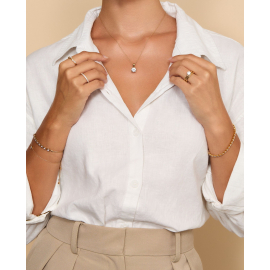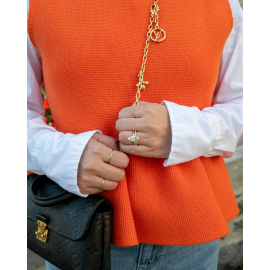Price match guarantee

We’ve teamed up with Klarna to provide flexible payment options, allowing you to shop the way you want. With Klarna, you can split your payment into 3 instalments or choose to pay later, making your shopping experience smoother and more convenient. Your order total must be between £100 and £499 to qualify.

We’ve teamed up with Klarna to provide flexible payment options, allowing you to shop the way you want. With Klarna, you can split your payment into 3 instalments or choose to pay later, making your shopping experience smoother and more convenient. Your order total must be between £100 and £499 to qualify.

September 09, 2024 | by Admin
It is law within the UK that every item of precious metal sold such as Platinum, Gold, Silver is stamped labelling the item with the type of metal it is. Platinum pieces which weigh less than 0.5 grams, 18ct Gold and Palladium pieces weighing less than 1.0 gram and Silver pieces weighing less than 7.78 grams are except from hallmark.
At Diamonds Factory all our products are hallmarked as per UK hallmarking law from London Assay Office (The GoldSmith Company)
The Goldsmiths' Company Assay Office is the oldest assay office in the United Kingdom. It has provided hallmarking services since The Goldsmiths' Company was founded in the 1300s. The company received its royal charter in 1327 and ranks 5th in order of precedence of the 12 Great Livery Companies of the City of London.
Hallmarking dates back to the 1300s when Edward I of England passed a law requiring any item made of silver, which was offered for sale, to be at least of equal quality as that of the coin of the realm (silver currency). The wardens of The Goldsmiths' Company were tasked with visiting workshops in the City of London to assay (test) silver articles. If these articles were found to be below standard they were originally destroyed and the metal forfeited to the King. If they passed, each article received the King's mark of authentication - the mark of a leopard's head. By 1478, there were several hundred workshops and merchants manufacturing silver articles in the City of London. It was not possible for the wardens to visit them all so the merchants were ordered to bring their items to Goldsmiths' Hall for testing and marking and a permanent Assay Office was established in the building. This is the origin of the term hallmark - struck with the King's mark at Goldsmiths' Hall.
In 1544 the Goldsmith's Company adopted the King's mark as their town mark and the mark of the leopard's head is now internationally recognised as the mark of this assay office.
The Goldsmiths's Company Assay Office is still based at Goldsmiths's Hall and remains the oldest company in Britain to be continually trading from the same site. However, it also has two satellite offices; at Greville Street in Hatton Garden in the heart of the London jewellery quarter and within a high security complex near London's Heathrow airport. It now has a new off-site facility within the Dalston-based jewellery manufacturer, Allied Gold. This is the first time in the Assay Office's 700 year history that it has opened permanent hallmarking services on a customer's premises.
In addition to hallmarking, the office has now expanded its range of services to support the jewellery trade and enforcement authorities. It offers a variety of specialist analytical services including nickel, lead & cadmium testing, antique silver dating, non-destructive compositional analysis, plating thickness measurement and a melt and assay service for scrap precious metal carried out in their fully independent on-site laboratory. Other services offered are a jewellery valuation service, laser marking, trading standards assistance, high quality photography and a comprehensive range of training and educational seminars, lectures and specialist events.






When it comes to birthstones, October babies are blessed with two of the most captivating and colourful gems: opal and tourmaline. These stones are not only adored for their visual appeal but are also rich in history and symbolism, making them a perfect gift for someone special or a cherished addition to your personal jewellery collection.
4 Prong Setting Pear Pink Tourmaline Tennis Bracelet
From £9,083
Bezel Setting Pink Tourmaline Stud Earrings
From £613
Bezel Setting Pink Tournamile Halo Engagement Ring
From £1,115
Prong Setting Pink Tourmaline Solitaire Pendant
From £404
Claw Prong Setting Round Pink Tourmaline Halo Earring
From £1,416
Prong Set Pink Tourmaline Engagement Ring
From £2,490
History: origins and ancient mythology

Opal's name is derived from the Sanskrit word for “precious stone”, "upala" and the Greek word "opallios," which means "to see a change in colour." Formed primarily from silica-rich water that seeps into cracks in the earth, evaporates and then leaves behind silica deposits which eventually turn into opal, the gemstone is most commonly found in Australia, which produces around 95% of the world's opal supply. Other significant sources include Ethiopia, Mexico, and Brazil.Throughout history, opal has been associated with various mythological tales. According to Arabic myth, opals fell from the heavens during thunderstorms, capturing the lightning within their multi-coloured depths. While Greek mythology suggests that opals were formed from the tears of joy wept by Zeus after his victory over the Titans.
Most commonly found in Africa and Brazil, tourmaline is formed by hydrothermal activity — a process in which hot water and vapours carry the necessary elements to form crystals in pockets or any open space within igneous or metamorphic rocks. As a crystalline boron silicate mineral containing a variety of elements, the gemstone boasts an array of colours, ranging from deep pinks and reds to greens, blues and yellows, and even multi-coloured varieties.
There are myriad myths surrounding tourmaline, many of which align with its colourful nature and magical properties. One ancient Egyptian legend claims that as the stone made its journey up from the Earth’s centre, it travelled along a rainbow, and this is why it can be found in so many different colours today. As a result, tourmaline is often referred to as the “rainbow gemstone”. Another popular belief about the birthstone is that it provides protection against negative energies and promotes a sense of calm and peace.
Symbolism

Opal is a gemstone that symbolises creativity, inspiration, and emotional expressiveness. Known for its mesmerising play-of-colour, it’s often associated with passion, love, and desire. It’s even believed to enhance imagination and help bring one’s deepest thoughts and feelings to the surface, making it a stone of introspection and self-awareness. Historically, opal has also been seen as a symbol of protection, hope, and purity.Often referred to as the “stone of reconciliation”, tourmaline is believed to inspire compassion, self-confidence, and inner strength. Different colours of tourmaline are thought to carry specific energies: for example, pink tourmaline is synonymous with love and compassion, green with prosperity and growth, and black with grounding and protection.
Caring for your stone

Caring for an opal stone requires special attention due to its delicate nature. To keep your opal looking its best, avoid exposure to extreme temperatures or direct sunlight for extended periods, as these can cause the stone to crack or lose its colour. Opal jewellery should be cleaned gently with a soft, damp cloth and mild soap, avoiding harsh chemicals and ultrasonic cleaners that could cause damage to the stone.By contrast, looking after a tourmaline stone is relatively straightforward, given its durability, but it does still require some attention to maintain its beauty. Clean your tourmaline jewellery with warm, soapy water and a soft brush or cloth, ensuring you rinse it thoroughly to remove any soap residue. Avoid harsh chemicals, high heat, or sudden temperature changes, as this can affect the stone's colour and cause fractures.
Both opal and tourmaline jewellery should be checked regularly by a professional to ensure the setting remains secure. All gemstone jewellery should be stored separately from one another in a fabric-lined box or soft pouch to prevent any scratches.
Which birthstone is the right one for you?
Whether you're drawn to the mystical allure of opal or the vibrant spectrum of tourmaline, each October birthstone offers something for everyone. When making a choice between the two, consider which gem resonates the most with your personal style and the qualities you wish to embody. Explore Diamond’s Factory’s selection to find the perfect opal or tourmaline piece that speaks to you.